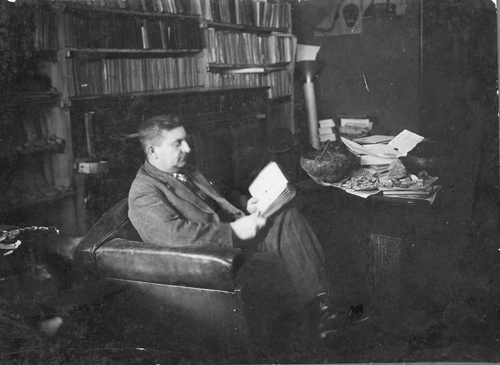
Aurel Filimon
A major personality of Tîrgu-Mureș, Aurel Filimon was the one who established the County Museum between the two world wars. As a passionate collector, he was interested in archeology, ethnography and folklore, as well as natural history, paleontology and geology. Filimon was born on March 6, 1891 in Monor (Bistrița Nasaud County). He started his studies at the Civil School of Bistrita and then, until 1910, attended the Normal School of Deva. His first job was as primary school teacher at Vișeul de Sus in Maramureș. Being passionate with folk art and folklore, he gathered an impressive number of local poems, fairy tales, songs and incantations which he later grouped in three volumes. He continued his studies at the University of Budapest and then in Berlin, specializing in archeology and paleontology. In 1912 he became a member of the Budapest Society of Natural Sciences, and in 1913 of the Society of Geology. He published an article entitled Superstitions of the Romanians from the Surroundings of Bistrita in the Etnographia review, and was highly appreciated for the scientific value of this anthropological study. After the beginning of the First World War, Filimon left Budapest and went to Romania. Between 1914 and 1917 he was the secretary of the National and Ethnographic Art Museum of Bucharest. He returned to Transylvania after the war and the instauration of Romanian administration. As of 1918, Aurel Filimon was a librarian at the Library of Tîrgu-Mureș and later was promoted manager. As manager of the public library, his most important contribution was to add numerous books in Romanian to the library's collection. After several years in Tîrgu-Mureș, he took the initiative to open an exhibition of Romanian and Seklar folk art in two halls of the Palace of Culture. On this occasion, on May 1, 1921, the Museum of Tîrgu-Mureș came into being; however, for a long period of time it would only have temporary exhibitions. Filimon was appointed custodian of the museum and during the 1920s he worked to develop and organize the collections as efficiently as possible. His intention was to establish a museum of archeology, ethnography and natural sciences. At the same time, he was secretary of the Historical, Ethnographical and Archeological Society of Mureș. The establishment of the Transylvanian section of the Commission for Historical Monuments in Cluj had a positive effect on the archeological research and led to the development of museum collections. Filimon cooperated with the commission by gathering a vast number of archeological items from the Mureș County. In 1925, archeological excavations were resumed under his supervision in Cristești, near Tîrgu-Mureș, where a Roman settlement had been unearthed. In order to capitalize on the numerous archeological items found here, it was necessary for the museum to expand and undergo a reorganization. Filimon argued in favor of the involvement of cultural institutions in the education of the public. He wanted a systematic organization that would be in line with educational purposes. The first permanent exhibition of the museum was opened in 1934. Filimon also took part in the archeological excavations in other localities of the Mureș County, such as Mircești, Band, Iclănzel, Lechința and Suseni. In Suseni he discovered the famous fibula which later became the emblem of the Mures museum. He worked with important Romanian archeologists such as Vasile Pârvan, D. T. Teodorescu and P. P. Panaitescu. After the instauration of the Horthyst regime following the Diktat of Vienna in 1940 Filimon was forced to flee to Bucharest. Aurel Filimon”™s scientific activity places him among the pioneers of modern archeological research due to his methods of assessment and conservation of archeological items, and especially due to his general perspective of the material and spiritual heritage of the past. Bibliography: Aurel Filimon – Consacrare și destin, volum editat de Biblioteca Județeană Mureș și Fundația Culturală "Vasile Netea", Tîrgu-Mureș, 2001

